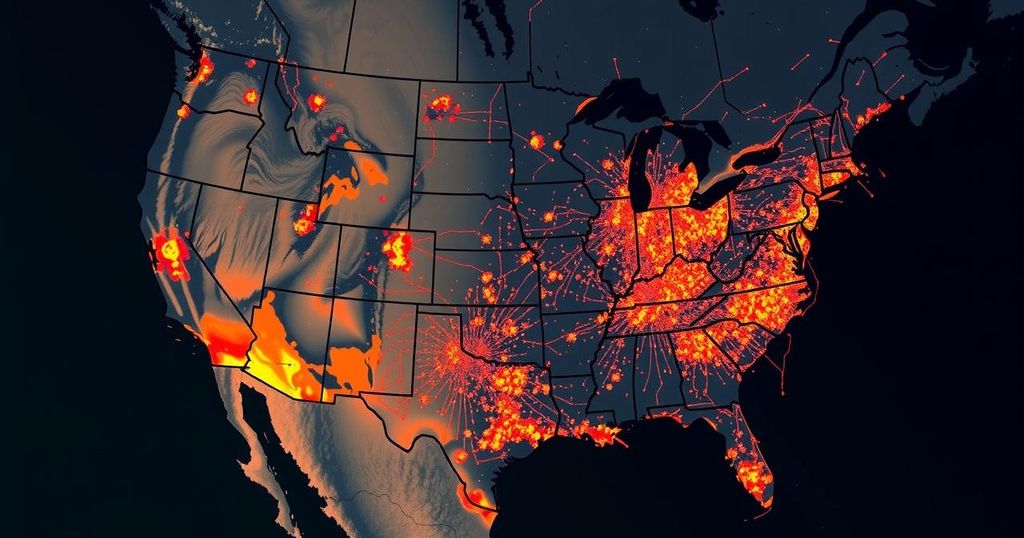On Thanksgiving Day, a series of minor earthquakes were reported in Virginia, Mississippi, Tennessee, and Arkansas, with the largest measuring 2.5 in Mississippi. Despite some residents feeling shaking, there were no damages or injuries reported. The events have raised concerns about public preparedness for potential future significant earthquakes, particularly in the historically active New Madrid Seismic Zone.
Thanksgiving Day witnessed a series of minor earthquakes across the eastern United States, with the U.S. Geological Survey reporting significant seismic activity in Virginia, Mississippi, Tennessee, and Arkansas. The most notable quake registered a magnitude of 2.5, occurring in Mississippi. Although the earthquakes varied in magnitude, ranging from 1.8 to 2.5, reports indicate no damage or injuries.
The tremors commenced shortly before midnight in central Virginia with a 1.8 magnitude quake near Louisa, occurring at 11:39 PM at a shallow depth of 0.3 kilometers. This was followed by a 2.5 magnitude quake in Mississippi at 1:48 AM, originating at a depth of 5 kilometers near Canton. A sequence of three earthquakes in western Tennessee occurred within a span of forty minutes, all occurring near Ridgely and registered between depths of 5.9 and 6.1 kilometers. Meanwhile, a magnitude 2.1 earthquake struck Strawberry, Arkansas at 4:24 AM, also situated within the New Madrid Seismic Zone.
Despite the quakes being minor with no reported damage, there is rising concern among authorities regarding public preparedness for more significant seismic events in the future. Historical records note that the New Madrid Seismic Zone has a legacy of severe earthquakes, raising questions about when the next substantial quake may occur.
The anniversary of the 1811-1812 earthquakes looms, marking a time of unparalleled seismic activity in the region. On December 16, 1811, an 8.1 magnitude earthquake devastated northeast Arkansas, which was felt as far away as New York City and Washington, D.C. Over the following months, a series of aftershocks and severe quakes led to extensive ground shaking and unusual natural phenomena such as earthquake lights and seismic heating of water, highlighting the area’s seismological volatility.
Given the intense seismic history of the New Madrid Seismic Zone, experts predict that another major earthquake is probable, although the timeline remains uncertain. This poses a significant risk, notably due to the population density in the region now compared to the early 1800s, suggesting that a future event could result in numerous casualties and substantial property damage.
This article discusses the recent occurrences of earthquakes in the eastern United States on Thanksgiving Day, notably in the New Madrid Seismic Zone, a historically active seismic area. It details the events’ magnitudes, affected locations, and the lack of damage resulting from these quakes. The context of seismological history in that region, particularly the major earthquakes of the early 19th century, is essential to understand the potential future risks associated with such seismic activity.
In summary, the Thanksgiving Day earthquakes, while minor and without reported damage, serve as a reminder of the seismic risks inherent to the New Madrid Seismic Zone. With historical precedents indicating the potential for significant future quakes, authorities emphasize the importance of preparedness among residents. As scientific understanding of these events continues to evolve, the call for public readiness grows more urgent, given the dense population that now occupies this seismically active area.
Original Source: weatherboy.com






